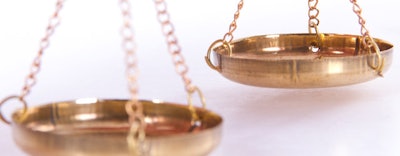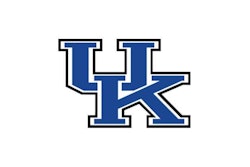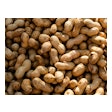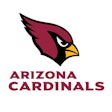
Facility owners should and typically do exercise due diligence when selecting the equipment and components that will make their businesses desirable destinations for sports participants. But how far does an owner’s duty of care extend to users once a selected product is installed?
Eleven-year-old Michelle DiPietro sustained a serious ankle injury on March 9, 2002, while playing indoor soccer at the Farmington Indoor Sports Arena in Farmington, Conn. Her mother, Karen DiPietro, filed a premise liability lawsuit against the arena, property owner Dimensional Technology Group LLC, and Paul DiTommaso, the facility operator.
In her initial complaint to the trial court, the plaintiff alleged that while Michelle was running on the carpeted indoor soccer surface, her foot stuck to the ground, causing her to fall and sustain injury. The plaintiff also claimed that the injury caused difficulty walking, severe pain and suffering, as well as mental distress and emotional anxiety.
DiPietro contended in the premise liability lawsuit that Michelle’s fall resulted from a “dangerous and defective” condition with the playing surface, alleging that the defendants “negligently installed a playing surface inherently dangerous for indoor soccer.” In response, the defendants alleged that the plaintiff produced no evidence that the defendants knew or should have known of the dangerous condition.
Summary judgment was granted to the defendant by the trial court in 2004 but was appealed by the plaintiff. The appellate court upheld the verdict in 2010, but the plaintiff once again appealed. Ultimately, the Connecticut Supreme Court was called on in 2012 to decide the case of DiPietro v. Farmington Sports Arena, LLC, 306 Conn. 107, 2012.
ON THE SURFACE
The carpeted playing surface in question was a commercial-grade carpet selected and purchased by DiTommaso. The selection was based on DiTommaso’s decades of experience with indoor soccer, a recommendation from the carpet manufacturer, and use of similar surfaces by other indoor soccer facilities in Connecticut. At the time DiTommaso selected and installed the playing surface — four months prior to DiPietro’s injury — the only alternative was Astroturf. DiTommasso believed Astroturf would cause rug-burn injuries, and thus opted for what he deemed the safer of two choices.
At the time of DiPietro’s injury, there were no industry or government standards regulating playing surfaces for indoor soccer. The United States Indoor Soccer Association, of which the arena was a member, did not prohibit carpeting as an indoor playing surface. After the carpet was installed, the facility was inspected and approved by the Connecticut Junior Soccer Association, a sanctioning body for commercial indoor soccer facilities. The inspection concluded that the surface was “flat and even, firmly secured to the underlying concrete surface, and free of visible defects.” Finally, Michelle’s coach attested that at the time of her injury the carpet was in good condition and free from “damaged areas, lumps, rolls, cuts, tears, or any other foreign object.”
Although the defendants produced ample evidence that they did not have actual or constructive notice of an unsafe condition, the plaintiff asserted by use of an expert witness that the facility had a duty to perform safety testing on the installed surface to determine if inherent risks existed that rendered the surface unreasonably dangerous. The expert witness, a professor of biomechanics at the University of Calgary, conducted such testing using the shoes Michelle was wearing and samples from the carpet at the defendant’s facility. He concluded that the flooring surface installed at the arena was unreasonably dangerous and unfit for use because the level of resistance between the shoe sole and the surface during common athletic movements produced conditions that created excessive forces on the foot, which could lead to ankle injuries.
Although the witness maintained that the carpeted surface was a substantial factor in causing Michelle’s injuries, he did acknowledge that no industry standards existed for indoor youth soccer, and that his personal experience with the appropriate management of indoor youth soccer was quite limited.
PLAYING DEFENSE
Upon review of the lower and appellate court findings, the Connecticut Supreme Court applied the well-established principles of premise liability law. Specifically, a business owner owes its invitees a duty to keep premises in a reasonably safe condition, and warn invitees of dangers that may not reasonably be discovered. However, for a plaintiff to successfully assert defendant liability and recover damages as an invitee, it is incumbent upon him or her to prove that the defendant “either had actual notice of the presence of the specific unsafe condition which caused the injury, or constructive notice.” Further, the notice must be of the actual defect that caused the harm.
Business owners do not breach their duty to invitees by failing to remedy a danger unless they have actual or constructive notice of that danger. The dangerous condition created by the carpeted soccer surface was unknown to the defendant; it was undisputed that the arena owners and operators did not have actual notice of the alleged dangerous characteristics. However, the plaintiff argued that because the carpeted playing surface had been installed nearly four months prior to Michelle’s injury, constructive notice existed.
The Connecticut Supreme Court was not persuaded by the plaintiff’s arguments for constructive notice. As stated by the court, “business owners are chargeable with constructive notice of a dangerous condition when, had they exercised reasonable care, they would have discovered the unsafe condition.” The defendants produced substantial evidence that they did exercise reasonable care in selecting the playing surface, while the plaintiff produced no evidence to prove a lack of reasonable care.
Further, the constructive-notice theory is premised on a general duty to inspect. In this case, a visual inspection could not have revealed the inherently dangerous use of the carpet for indoor soccer. Beyond inspection, constructive notice can also arise from industry standards or government regulations. However, there were no such standards prohibiting the use of the carpeted surface for indoor soccer. Finally, the court determined that the plaintiff’s use of expert witness testimony to establish constructive notice was flawed. While the opinion of the expert may have been relevant as to the cause of Michelle’s injury, it was not sufficient to establish that the defendants had constructive notice of an inherently dangerous condition.
Notably, the court stated that the plaintiff’s claim resulted in the assertion that a premise owner operator’s duty to reasonably maintain the premise in a safe condition includes a responsibility to conduct safety testing — in this case, the playing surface. The court strongly disagreed, stating that “business owners… are not insurers of their customers’ safety,” and that in absence of “visually discoverable hazards, previous indications of danger, or industry and government standards,” a defendant’s duty does not extend to include testing for inherent defects.
The arena owners and operators fulfilled their legal responsibilities to the plaintiff regarding premise liability, but this case illustrates that even when the duty to keep premises in a reasonably safe condition is satisfied, facility owners and operators may still encounter significant claims of liability. The defendants in this case were ultimately successful, likely because of their ability to demonstrate significant research and consideration regarding the selection of the playing surface, as well as multiple inspections prior to and during use of the surface for indoor soccer, thus satisfying the duty to inspect.
Kristi Schoepfer-Bochicchio is an associate professor of Sport Management and Sport Law at Winthrop University in Rock Hill, S.C. Please send questions to [email protected].
This article originally appeared in the December 2014 issue of Athletic Business with the title "Complaint Unravels"
































